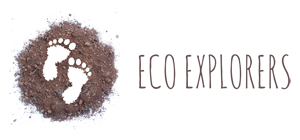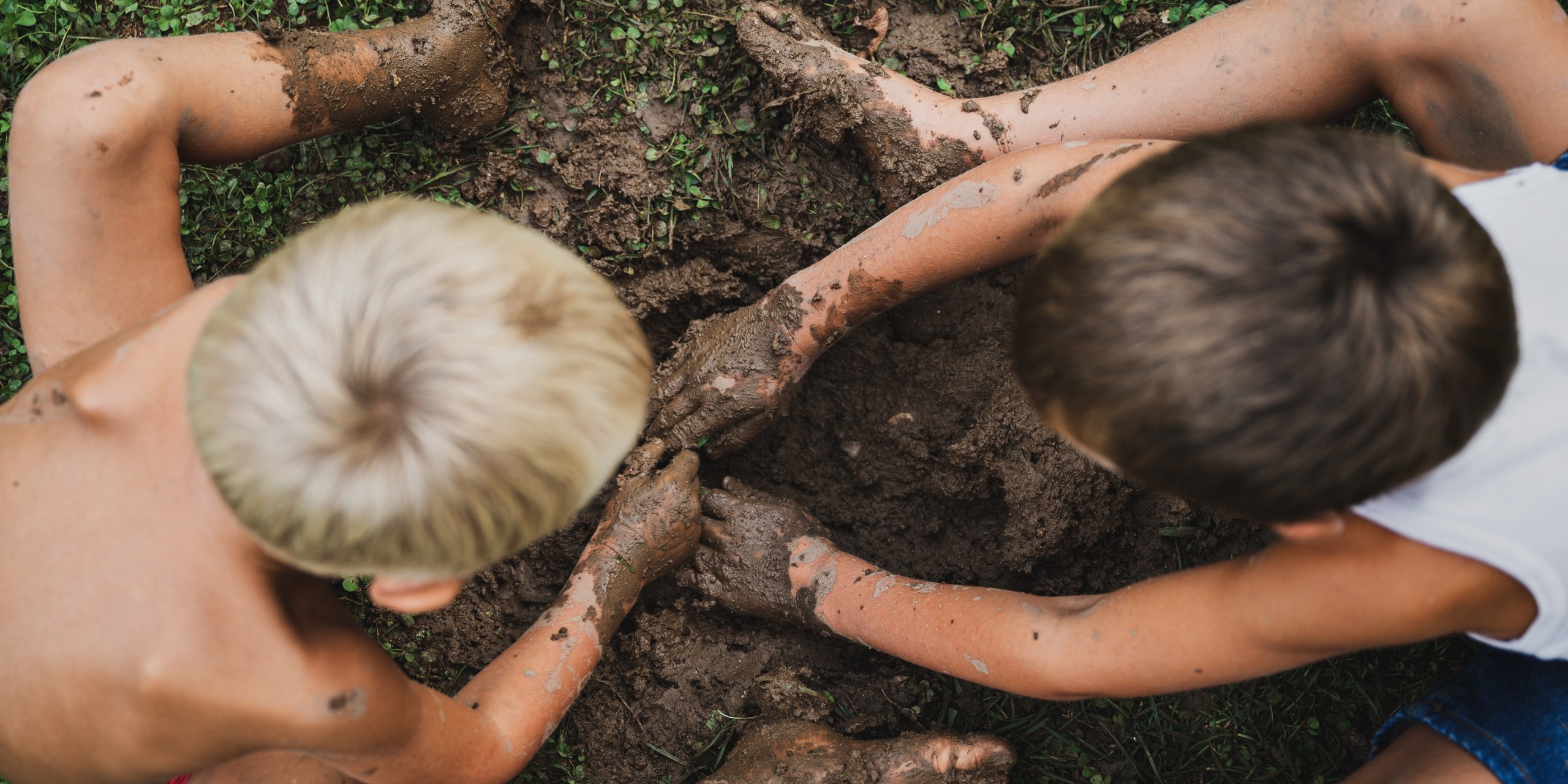Why I should let my child play in dirt
… in fact, it can help the little ones greatly.
You may be aware of the immune-boosting benefits of playing dirt in early childhood.
One study concludes that children aged 3-5 who had interacted heavily with healthy soils had higher levels of anti-inflammatory proteins in their blood, contributing to healthier immune systems, as well as a higher diversity of important microorganisms on their skin. There is also evidence connecting environmental exposure to reduced allergies and rates of asthma.
Importantly for tiny tots, playing in the dirt with fun activities like gardening or pretend mud kitchens can assist in sensory and tactile development, which can give them a better understanding of science, technology, engineering, and mathematics (STEM) fundamentals useful later in life.
As if we needed more reasons to let kids have some fun in the mud!
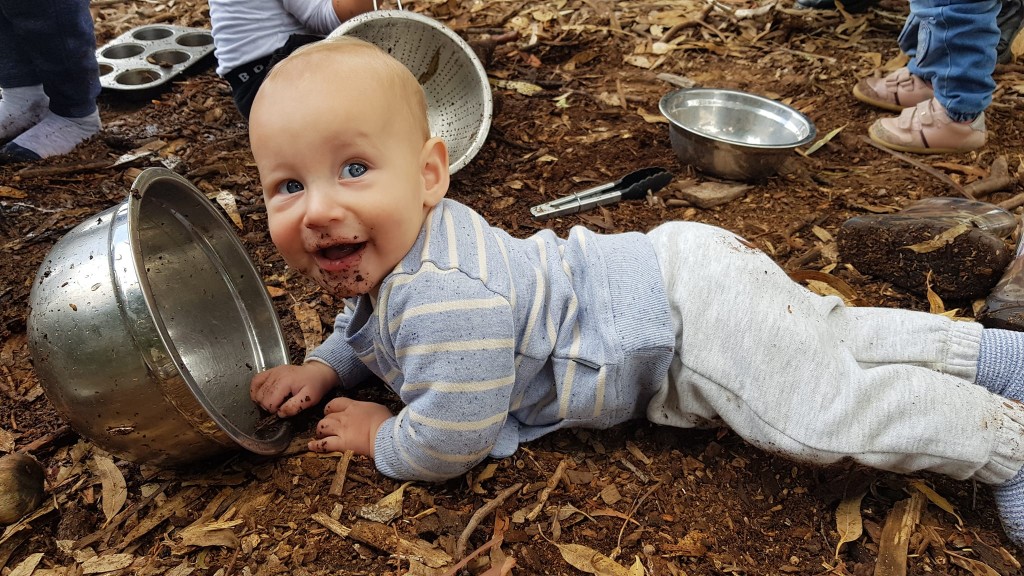
Ways families can connect to dirt
And while we’re enjoying mud play and all the good things it has to offer us, there are many ways we can simultaneously benefit the natural world around us. There are plenty of easy and fun activities you could do together such as:
- Planting an edible garden, or setting up a native herb box. Any food you grow yourself reduces your own carbon footprint through reduced produce transport, and is sure you give you great satisfaction!
- In addition to edible planting, adding pollinator-friendly flowers to your backyard or the nature strip outside your home is a great way to support the local ecosystem while you’re getting your fingers in some dirt!
- Weeding! Be sure to know which invasive and environmentally harmful weeds to look out for around your home, or on the next sunny afternoon nature walk.
- While getting down and dirty, make it interesting by teaching kids about observing animal tracks in the dirt. These cards link can help teach kids how to identify what animals are around from tracks and scats, making them more aware of their natural surroundings.
- Make your own worm farm! Not only do you get a bunch of new cost-effective and low-maintenance pets, but you create nutrient-rich soils and worm wee which is great for your garden/ plants!
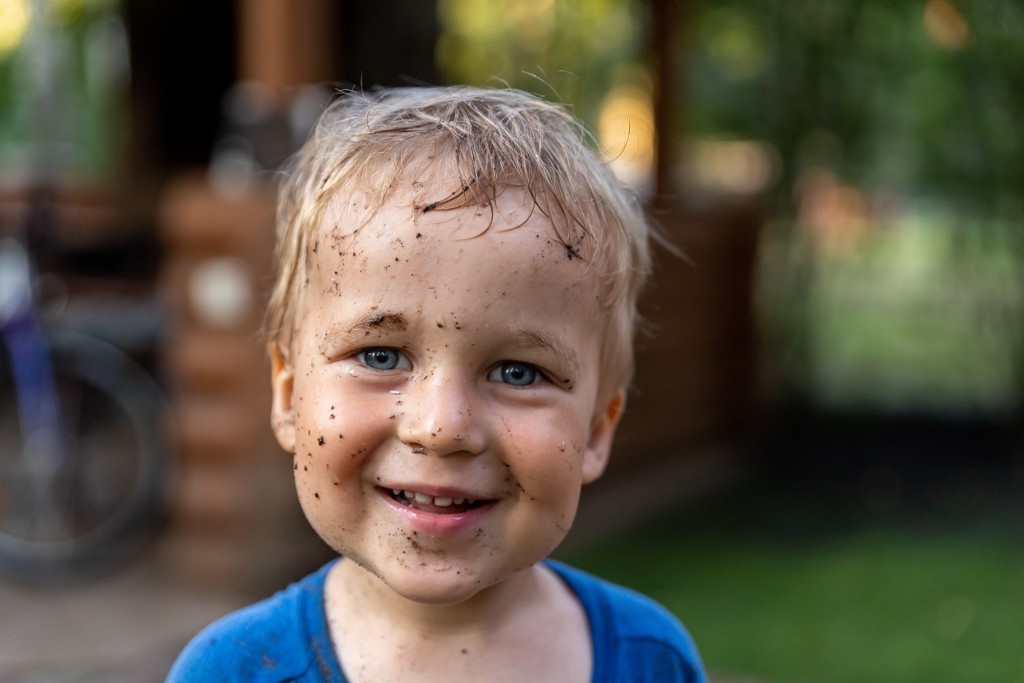
World soil day – 5th Dec
In the early 2000s, the International Union of Soil Sciences (IUSS) dedicated the 5th of December to World Soil Day to acknowledge the importance of soils to human health and a key component of natural ecosystems globally. Soil ecosystems provide many services (listed below).
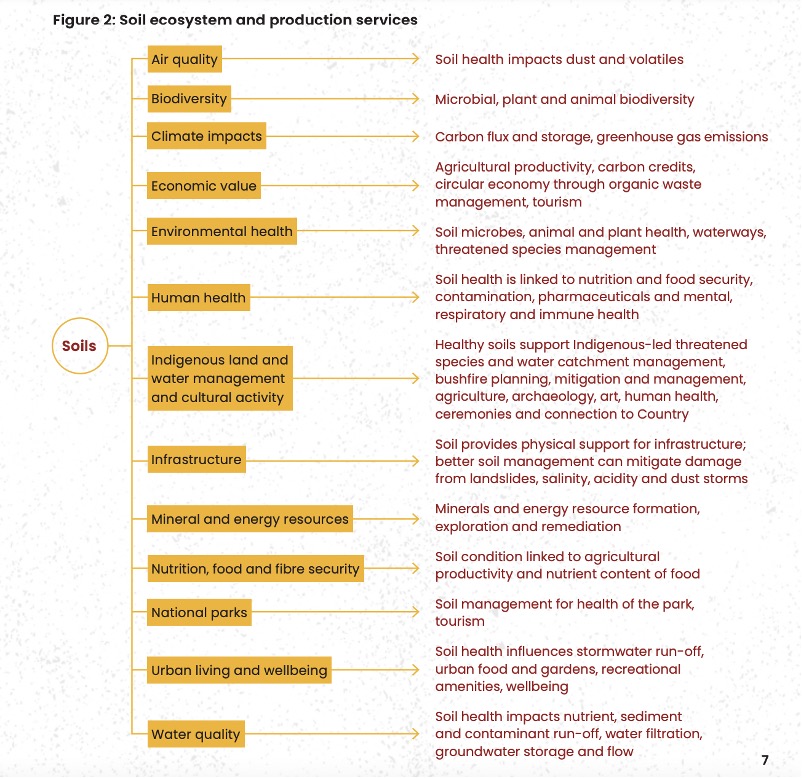
Source: https://www.agriculture.gov.au/sites/default/files/documents/national-soil-strategy.pdf
Healthy soil sequesters carbon dioxide out of the atmosphere. So when soil is damaged, this CO2 is released back into the atmosphere. This contributes to climate change.
Healthy soil also means lots of microorganisms. Like lots. Like in one handful of healthy soil there are more organisms than there are people who have EVER lived on earth!! And these organisms are doing so many essential things for all living things around (and including) us.
Think of it as the building blocks of the food web, where their health accumulates up until it gets to us.
Soils also contribute to a healthy water cycle, being a big determiner of how much water is stored in the earth, and how much is available to plants.
What you can do
You can help support the cause in your everyday actions by planting soil biodiversity-promoting plants, reducing the use of harmful chemicals in your garden, volunteering with local Landcare groups, and more!
More information can be found here.
While out and about, when bushwalking, and especially while visiting national parks, or conservation areas, you’ll want to take some precautions to ensure the protection of important soils.
To minimise damage to soils, and soil-supporting plants, stick to footpaths as much as possible while bushwalking.
Do not remove plants or dig up large holes in the soil unnecessarily, and leave nothing but footprints as you pass through nature.
Think about all the good soil does for you, why not give back!
Watch a film or documentary on soil conservation and preservation. Here are our suggestions:
Kiss the Ground (2020)
Living Soil (2018)
Dirt! The Movie (2009)
Kids’ Books recommendations
https://www.publish.csiro.au/book/7464/ A Hidden World Underground
By: Samantha Grover
A Story of Soil Cycles
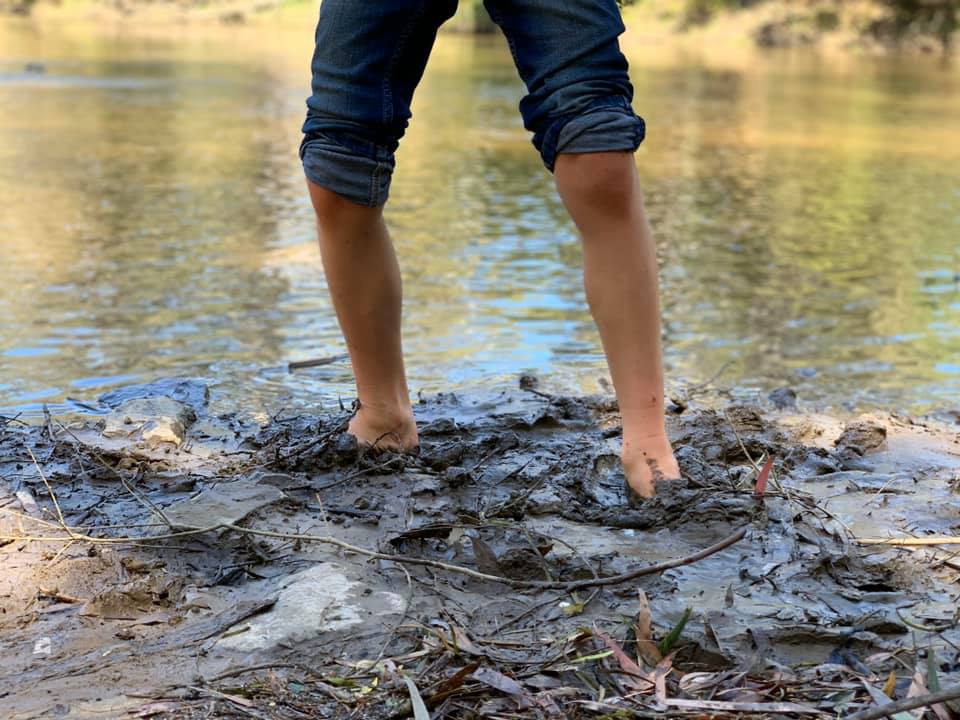
This article was written by Eco Explorers Bush Kids Facilitator, Emma Barrett who has a Masters of Environment, specialising in ‘conservation and restoration’.
